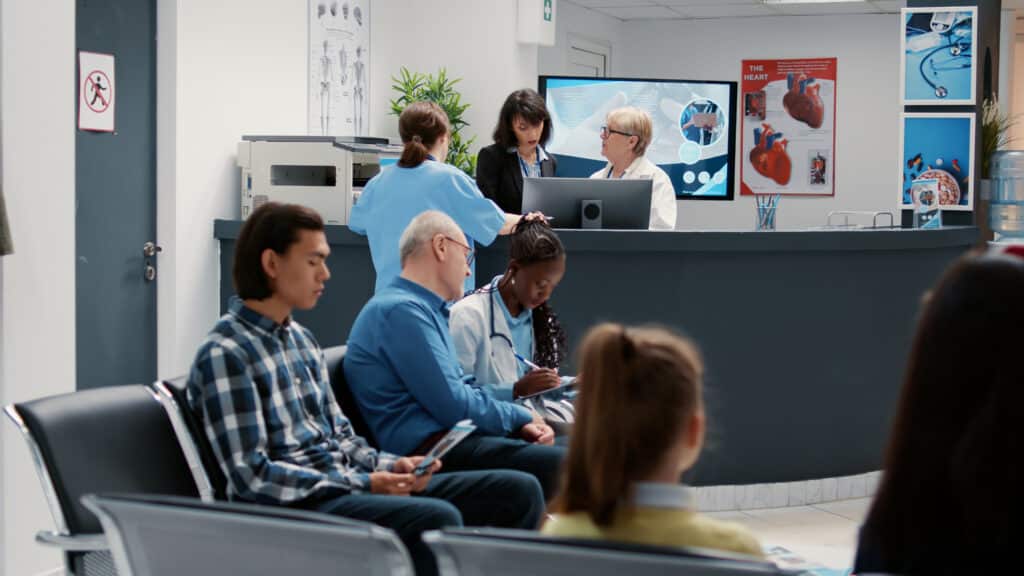
According to the Centers for Disease Control and Prevention (CDC), 6 in 10 adults in the United States have a chronic disease. These conditions place a tremendous burden not only on patients and families but also on healthcare providers and practices.
Effective chronic care management (CCM) is, therefore, no longer an optional component of healthcare delivery; it is essential. Traditional models of episodic, in-person visits are insufficient for conditions requiring continuous monitoring and lifestyle adjustments. This is where Electronic Health Record (EHR) software plays a transformative role.
EHR solutions have evolved into more than just digital repositories of patient information. EMR-EHRS takes this further by offering an intelligent, interoperable platform that empowers providers to manage chronic care more effectively. With advanced analytics, automation, and seamless coordination tools, EMR-EHRS helps providers like you improve patient outcomes, reduce administrative burdens, and support value-based care in today’s AI-driven healthcare landscape.
Simplify Chronic Care Management Today
Understanding Chronic Care Management
What is Chronic Care Management?
Chronic Care Management (CCM) refers to coordinated healthcare services for patients with two or more chronic conditions expected to last at least 12 months, focusing on long-term health outcomes and prevention rather than short-term treatment. These services include ongoing monitoring, medication adherence support, care coordination, and patient education.
For example, managing diabetes effectively requires a multifaceted approach: continuous monitoring of blood glucose levels, dietary habits, physical activity, and medication adherence. Similarly, hypertension management relies on regular blood pressure tracking and lifestyle adjustments. Without a structured CCM, patients often fall through the cracks, leading to costly emergency visits and preventable complications.
Challenges Providers Face in CCM
Providers often face significant challenges in delivering effective CCM:
- Fragmented Data: Patient information is often scattered across multiple systems, making it difficult to obtain a complete health history.
- Limited Patient Engagement: Many patients fail to follow through on care plans due to a lack of understanding, motivation, or access to resources.
- Time Constraints: Providers are often overwhelmed with administrative tasks, leaving little room for proactive chronic care.
- Reimbursement Barriers: Meeting Medicare’s strict CCM billing rules and maintaining accurate documentation make reimbursement complex and time-consuming.
These highlight the need for robust digital tools. EHR software for providers offers solutions that streamline workflows and empower both clinicians and patients in managing chronic diseases.
Role of EHR Software in Chronic Care Management
Centralized Patient Records
EHR software creates a single source of truth for each patient. Providers gain access to longitudinal health histories, lab results, imaging reports, prescriptions, and past treatments in one place. This eliminates redundancy, reduces errors, and enhances decision-making.
Care Coordination & Team Communication
CCM requires close collaboration among primary care providers, specialists, nurses, and care managers, and EHR platforms make this easier through secure messaging, task assignments, and shared care plans. This ensures that all stakeholders are aligned, reducing gaps in care and improving patient satisfaction.
Remote Monitoring & Integration
Modern EHRs integrate with remote patient monitoring (RPM) devices, such as wearables, blood pressure cuffs, and glucose monitors. Real-time data flows directly into the EHR, giving providers up-to-date insights into patient conditions. This integration minimizes reliance on sporadic clinic visits and supports early interventions.
Key Features of EHR That Improve CCM
Clinical Decision Support (CDS)
EHR systems include automated alerts, reminders, and evidence-based guidelines for chronic conditions. For example, a provider managing a patient with diabetes may receive reminders to order HbA1c tests every three months. CDS tools reduce oversight and standardize care delivery.
Patient Engagement Tools
EHR software provides patient portals where individuals can view test results, receive medication reminders, and securely message their providers. Empowered patients are more likely to adhere to care plans, reducing the risk of complications.
Customizable Care Plans
Each patient’s chronic disease journey is unique. EHRs enable providers to design personalized care plans tailored to each patient’s specific needs, comorbidities, and lifestyle factors. For instance, a patient with COPD may have a care plan that emphasizes pulmonary rehabilitation, smoking cessation, and vaccination schedules.
Analytics & Reporting
EHR platforms provide population health insights, enabling providers to track outcomes, stratify risk, and identify gaps in care. Analytics dashboards can flag patients overdue for screenings or highlight trends in medication adherence.
Billing & Compliance Support
CMS reimburses providers for CCM services under CPT codes (99490, 99487, etc.), but compliance requires detailed documentation. EHR software simplifies this with automated time tracking, pre-filled templates, and billing reports, ensuring providers are reimbursed without administrative overload.
Benefits of EHR Software in Chronic Care Management
Improved Patient Outcomes
Studies have shown that EHR-driven CCM reduces hospital readmissions and emergency department visits. For example, a study published in the Journal of the American Medical Informatics Association found that integrating EHR data with chronic disease care improved outcomes for diabetic patients by lowering HbA1c levels.
Enhanced Provider Efficiency
Automated workflows, task prioritization, and integrated communication reduce time spent on administrative tasks, allowing providers to focus more on direct care.
Cost Reduction for Patients & Providers
By preventing unnecessary hospitalizations and redundant tests, EHR-supported CCM reduces costs. Patients save on avoidable ER visits, and providers reduce overhead expenses.
Data-Driven Decision Making
With predictive analytics, providers can anticipate patient complications before they occur. For example, an EHR might flag a patient at high risk of stroke based on patterns in blood pressure readings, prompting preventive measures.
Best Practices for Using EHR in Chronic Care Management
- Train Staff Thoroughly: Ensure providers and care managers are trained to maximize the full range of EHR features.
- Integrate with Telemedicine: Use telehealth platforms for virtual follow-ups to complement EHR data.
- Leverage Patient Portals: Encourage patients to actively use portals for ongoing communication and adherence tracking.
- Focus on Compliance: Use EHR’s built-in compliance tools to align with HIPAA, Medicare, and state regulations.
- Regularly Audit Workflows: Continuously review how EHR tools are used to improve efficiency and outcomes.
Future of Chronic Care Management with EHRs
Looking ahead, AI and machine learning will further enhance predictive care. EHRs will integrate with broader health information exchanges (HIEs), enabling interoperability across providers and systems. The shift to value-based care models will make CCM even more critical, with EHR platforms providing the backbone for outcome-driven reimbursements.
Transform Your Chronic Care Management with EMR-EHRS

Chronic care management is one of the most pressing healthcare priorities of our time. With millions of patients living with multiple chronic conditions, providers need robust digital tools to deliver proactive, coordinated, and personalized care.
EHR software has emerged as the cornerstone of modern CCM—centralizing patient data, enabling seamless collaboration, integrating with RPM devices, and driving predictive, data-informed decision-making.
For providers, the benefits are clear: improved patient outcomes, reduced costs, enhanced efficiency, and compliance with reimbursement requirements. For patients, EHR-enabled CCM means greater engagement, fewer hospital visits, and a better quality of life.
At EMR-EHRS, we specialize in delivering tailored EHR software for providers that support chronic care management solutions designed to empower practices in today’s evolving healthcare landscape.
Smarter Chronic Care Starts with the Right EHR
Frequently Asked Questions
What role does EHR software play in chronic care management?
EHR software centralizes patient data, supports care coordination, automates reminders, and integrates with remote monitoring tools—helping providers deliver continuous, personalized care for patients with chronic conditions.
How does EMR-EHRS improve chronic care outcomes?
EMR-EHRS combines intelligent automation, analytics, and interoperability to help providers track patient progress, prevent complications, and improve long-term health outcomes while reducing administrative workload.
Can EMR-EHRS help with Medicare’s CCM billing requirements?
Yes. EMR-EHRS simplifies CCM billing and documentation with automated time tracking, pre-filled templates, and built-in compliance tools, ensuring accurate reporting and faster reimbursements.
Why should healthcare practices invest in EHR software for CCM?
EHR-driven chronic care management improves efficiency, enhances patient engagement, reduces costs, and ensures compliance with value-based care models—making it essential for modern healthcare delivery.






















